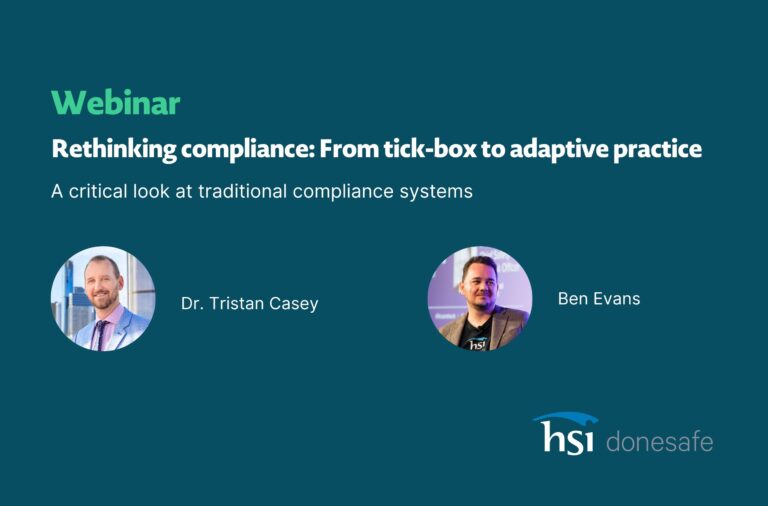
Musculoskeletal injuries (MSIs) are among the most common and costly workplace incidents, directly impacting employee well-being and your company’s productivity. According to the World Health Organization (2023), approximately 1.71 billion people globally are affected by musculoskeletal disorders, with 50–70% of these individuals being workers.
In fact, musculoskeletal conditions are the leading contributor to disability worldwide, with low back pain being the single leading cause of disability in 160 countries.
These injuries—whether caused by poor ergonomics, repetitive tasks, or physical strain—do more than cause discomfort; they reduce efficiency, increase costs, and lead to long-term disability and early retirement.
But here’s the good news: MSIs are preventable. By adopting the right strategies and tools, you can protect your employees and create a more productive workplace. Supported by HSI Donesafe’s EHS software, these five strategies will help you prioritize musculoskeletal health, prevent injuries, and build a safer work environment.
1. Conduct Regular Ergonomic Assessments
Workspace design plays a critical role in musculoskeletal health. Poor ergonomics can lead to sprains, strains, and long-term injury, especially if the risks remain undetected. Regular ergonomic assessments help you catch problems early, allowing for adjustments that support your team’s wellbeing.
With a comprehensive EHS platform, ergonomic risks no longer stay hidden. Assess employee workstations, identify areas for improvement, and ensure compliance with ergonomic best practices. The platform uses real-time data to give you complete visibility into the health of your workforce. When you transform insights into action, every workspace evolves to meet the needs of your employees, helping prevent MSIs before they start.
2. Implement Comprehensive Training Programs
When it comes to preventing MSIs, knowledge is your first line of defense. Your team needs training on proper lifting techniques, body mechanics, and safe work practices specific to their roles. With the right education, employees aren’t just informed—they’re equipped to protect themselves from injury.
Effective training transforms knowledge into action, equipping your employees with the skills they need to stay safe. From tracking compliance requirements to automating training schedules and certifications, the HSI Donesafe platform streamlines employee education.
3. Establish an Efficient Incident Reporting System
To prevent MSIs, you must know when they’re at risk of occurring. That’s why it’s essential to encourage your team to report injuries and near misses as soon as they happen. An accessible reporting system enables you to track incidents, spot trends, and take action before small issues grow into significant injuries.
Build healthier habits with HSI Donesafe’s Incident Management tools. Your team can easily report injuries and near misses directly from their devices, streamlining the process. Automated workflows ensure every incident is promptly flagged for review, so nothing slips through the cracks. With real-time reporting, you can analyze trends and implement preventive measures, significantly reducing the risk of musculoskeletal harm across your team. Create a proactive, not reactive, safety culture with the right tools.
4. Promote a Culture of Safety and Wellness
In a workplace that champions safety and wellness injuries become a rarity. Encourage your employees to take an active role in their own wellbeing, speak up about hazards, and contribute to a culture where health and safety aren’t just rules—they’re values. When workers realize that their actions directly influence their safety and that of their colleagues, they become advocates for a healthier, more secure environment.
With HSI Donesafe, safety becomes part of your organization’s DNA. Track wellness initiatives, gather employee feedback, and monitor participation in health programs, all through one integrated platform. By embedding safety and wellness into your workplace culture, you build a stronger, more engaged team. When safety becomes a shared responsibility, productivity becomes a natural outcome.
5. Engage in Continuous Improvement
Musculoskeletal injury prevention is not a one-off task. Regularly reviewing ergonomics, training programs, and injury reports enables you to continually adapt to new risks and challenges. With population growth and an aging workforce, the number of people living with musculoskeletal conditions is rapidly increasing. A proactive approach ensures your workplace remains safe and productive.
HSI Donesafe provides the tools to continuously monitor, evaluate, and improve your health and safety strategy. By integrating ergonomics assessments, incident tracking, and employee training into one unified system, you can ensure musculoskeletal safety stays top of mind and your business remains adaptable to change.
With a commitment to continuous improvement, you’ll strengthen your workforce for the future.
Using HSI Donesafe to support the prevention of Musculoskeletal Injuries
Preventing MSIs creates a stronger, safer workplace. With HSI Donesafe’s EHS software, you can easily implement these five strategies, transforming your business’s approach to musculoskeletal health.
Take control of workplace safety before issues arise. Start reducing the risk of MSIs and build a more resilient workforce today.
Contact us to discover how HSI Donesafe can improve your safety initiatives.
———————————————————————————————————————————————————–
Looking to optimize your EHS software adoption and management? Check out the resources below:
- Explore practical solutions and get expert advice to overcome challenges with EHS Program adoption.
- Learn essential and effective strategies for maintaining Workplace Compliance.
Ready to see how our software can help you manage risks and injuries in your workplace?
Reach out today.
Share:



